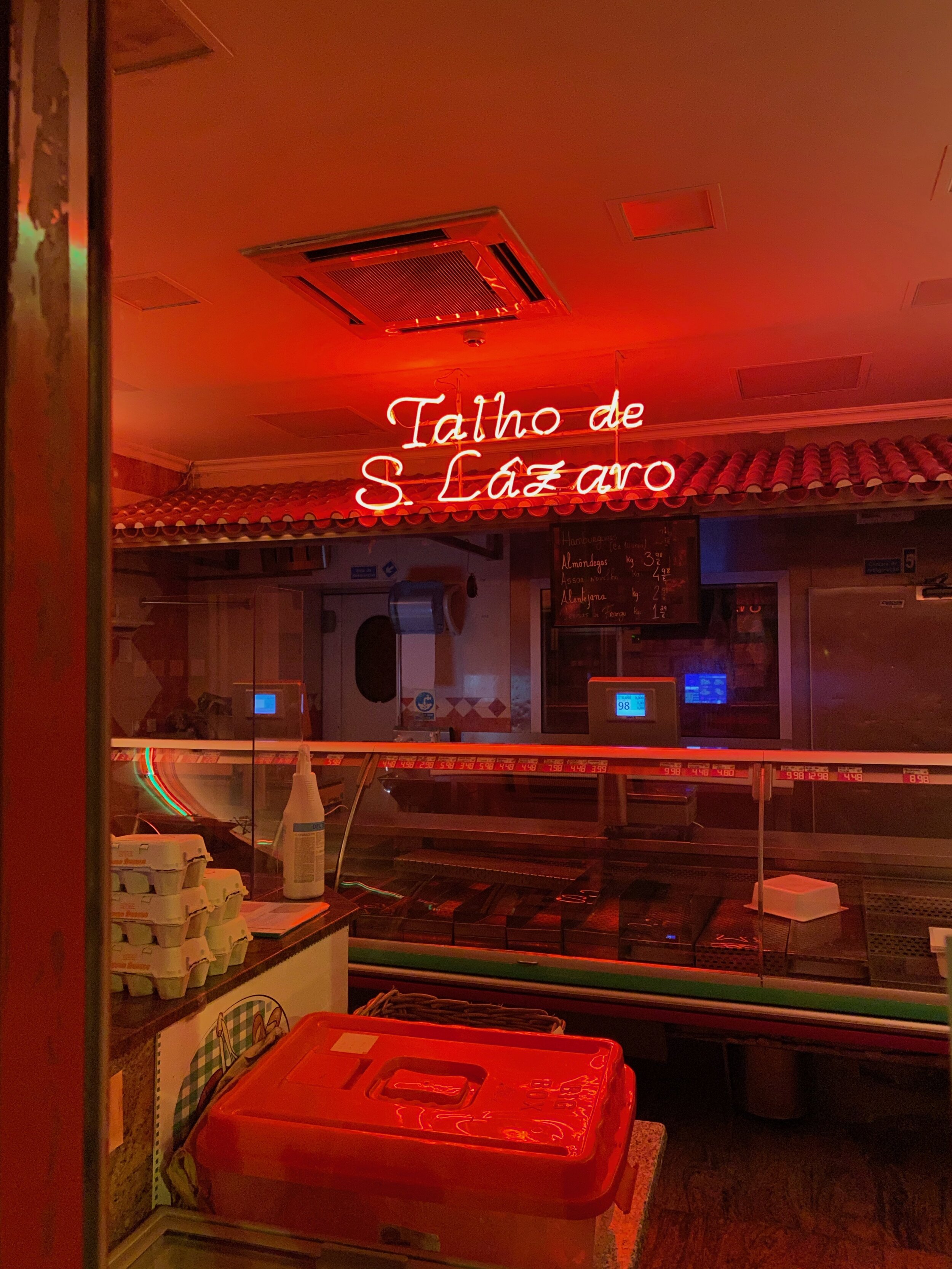Renata Torralba
Renata Torralba is a multimedia artist from São Paulo, Brazil, who is living and working in Lisbon, Portugal. We exchanged over email in the early autumn of 2020.
Tell me about how, or why, you became an artist.
I am an intense person, and I discovered art was a way to externalise my emotions and connect with other people – to create a sort of a healing space. I studied visual anthropology, photography and screenwriting. But when I finished those studies I was left not knowing how to connect all these mediums in a comprehensible way.
After walking in a lot of mixed paths, I found myself as a multimedia artist, working with transmedia projects that could embrace all my skills and interests. I’ve spent my life questioning whether or not I am an artist. Mostly because I'm in love with lots of different mediums, so it’s kind of hard to understand where I fit in the art field.
You mentioned using art as a way to connect with people. How do you think Covid-19 has affected art making, and the relationships between artists?
Covid-19 has been on my mind a lot and certainly affects my productivity.
Every historical moment has a great influence on artistic production and I believe that art speaks a lot about our surroundings, our relationship with the world and social isolation is that theme right now because this is the air we are breathing; anyone not thinking and talking about that doesn’t understand the moment we are passing through.
This moment has made it possible for us to break digital barriers even further. We’ve all had to accept this new way of relating. The big difference I have felt with this new phase is that I can connect with any part of the world even when I'm at home. Things are not good or bad, they are different and we are moving to a new era of blue screens. But that doesn't mean I don't miss being in with others and feeling other bodies affecting mine every day.
Some of your work was already tied to digital mediums. Do you think that made you ready for this moment?
The only certainty I had right at the beginning of my work as an artist was that I needed to develop a digital language. I started working with technology and digital communication, and creating artistic projects through social media. Soon my relationship with the physical world started to change and I got really attached to the material world, with the certainty that at some point it would not exist (or at least not in the way we know it). It was a very strong and sentimental intuition, but I had no idea when we were going to pass through this transition.
It is funny to think that my artistic production was already inclined and ready for this moment. Talhos (my current project still under development) is a work that talks about the illness and injuries caused by the encounter of bodies. And that's what Covid-19 is alerting us to.
Explain a little bit more about Tahlos.
Talhos is a multimedia project that explores bodies and relationships covered in blood and bruises. I see it working in different media, but always sharing one of the most powerful themes that I like to work on: pain.
It all started in August 2019, when I experienced a love delusion. I got really drunk and had an awkward moment that is best forgotten. The next day, I was a big mess, sad and complaining on the phone to my friend about my horrible night. We're both calling me a Dedo Podre*, a popular expression in Brazil, defining someone for their bad loving choices.
This expression echoed so strongly in my head, and threw up a lot of words that became the pilot script for a drama horror webseries about the falling ill of female friendships (still under development).
That same year, I went to Portugal and another word hammered in my head: "Talho", in PT Portuguese, "Butchery". Rips, meat, blood and bruises ... It was the perfect name for my new project. Back in Brazil, COVID-19 began to haunt the planet and I found myself trapped inside my apartment, having to explore my own body, objects and the emotional pain from that moment. Talhos, until then a script, expanded to photography and 3D Gifs, exploring bruises caused by the encounter of bodies.
Sorry that it took that horrible moment to inspire the project! I’m sure lots of us have been a Dedo Podre but it’s true that it has shame and secrecy attached and we tend to hide it, and pain too, even though we all go through it.
In a curious way, Talhos has managed to create an unusual space of trust, connection and I would even dare to say affection. All of this just to reinforce something that moved me since the beginning: everyone has a Talhos and they also would like to tell their story.
Today the project has gone through two online residencies and has been developed through an instagram account which acts as a research platform and a way to connect with people in different parts of the world. While I am investigating and disseminating these rich themes, people that I love – and others I have never met – send me their injuries.
Do you feel a kind of intimacy with people who share their Talhos with you?
I think that pain is a theme that presupposes intimacy, as there are almost no open and sincere spaces for this discussion in western society. It is as if pain lives secretly in people, embedded in a deep and obscure place. We are taught from an early age to smile in photographs, but it seems that pain is kept hidden, that it’s inappropriate for sharing.
When the project started, I had the idea of investigating my own body and injuries. At some point, I started to receive pictures of friends spontaneously sharing their Talhos with me and I realized I needed to expand the proposal. It didn't take long for people I didn't know to follow the account and send me their photos. Talhos is not just about my own pain, but it is giving space and form to the pain we all have in common.
There are several types of images, from broken objects (which I imagine are less intimate), to very strong photos that came along with extremely sincere and intimate stories and I realized that I should adopt some security protocols, such as asking if I could post the photo and tag the person. Incredible as it may seem, to this day no one has asked for it to be anonymous.
The project is only possible in a safe space, made by me sharing my own pains and creating an artistic layer on top of the pains of others. For me, this is the beauty and power of art; to reframe.
Who do you think needs the safety of that designated space? Is it the artist, the viewer or the contributor? What do you think the danger is?
“It is as if pain lives secretly in people, embedded in a deep and obscure place. ”
I think the danger is the images themselves.
I've been realizing that all of my work begins with this premise: images are dangerous. This leads me to investigate and poke this topic. What causes a trigger?
I notice that Talhos has images of sensitive content. As an artist I feel safe in the space of discussion I am creating, but does the viewer/user feel safe with my images?
That's why paying attention to the safety of those who participate is an important part of the project. I don't want to hurt people with my images, but I feel that discussing these issues, even if it is delicate, is important to heal them and transform in some kind of strength.
*Dedo Podre - literally “rotten finger”, as if the finger you used to point out the person you wanted was rotten and so had a negative affect on your choice.
See the Talhos project by Renata Torralba on Instagram





